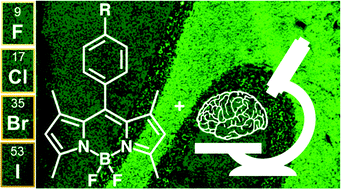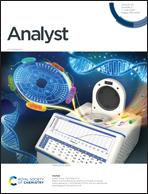Imaging lipophilic regions in rodent brain tissue with halogenated BODIPY probes†
Abstract
The effect of halogen substitution in fluorescent BODIPY species was evaluated in the context of staining lipids in situ within brain tissue sections. Herein we demonstrate that the halogenated species maintain their known in vitro affinity when applied to detect lipids in situ in brain tissue sections. Interestingly, the chlorine substituted compound revealed the highest specificify for white matter lipids. Furthermore, the halogen substituted compounds rapidly detected lipid enriched cells, in situ, associated with a case of brain pathology and neuroinflammation.



 Please wait while we load your content...
Please wait while we load your content...